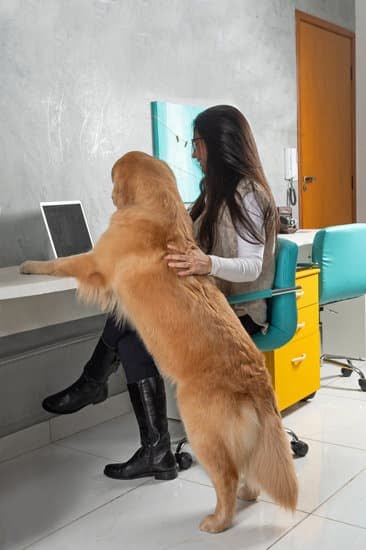Training your dog to sleep in her bed is an essential part of establishing good behavior and ensuring a restful night for both you and your furry friend. In this article, we will explore the importance of this training and provide a comprehensive guide on how to successfully achieve this goal.
First, we will discuss the significance of teaching your dog to sleep in her bed, highlighting the benefits it brings to both you and your pet. Then, we will delve into choosing the right bed for your dog, creating a comfortable space for her, and introducing her to the new sleeping area. We will explore positive reinforcement techniques, consistency, and dealing with potential setbacks throughout the training process.
By following our expert advice and utilizing proven methods, you can create a safe and positive environment for your dog to sleep soundly in her own bed.
Understanding these essential steps will ensure that you and your canine companion enjoy peaceful nights together. Whether you are a seasoned pet owner or welcoming a new puppy into your home, our guide will equip you with the tools needed to successfully train your dog to sleep in her own bed. Stay tuned as we uncover the key elements of this fundamental training process.
Choosing the Right Bed for Your Dog
When it comes to training your dog to sleep in her bed, one of the most important factors to consider is choosing the right bed for your furry friend. There are various options available, and it’s essential to select a bed that meets your dog’s specific needs and preferences. Here are some things to keep in mind when choosing the right bed for your dog:
- Size: It’s crucial to choose a bed that is appropriate for your dog’s size. The bed should be large enough for your dog to stretch out comfortably but not so large that it feels too spacious.
- Material: Consider the material of the bed, especially if your dog has any allergies or skin sensitivities. Look for beds made from hypoallergenic and easy-to-clean materials.
- Support: Just like humans, dogs need proper support while they sleep. Choose a bed with adequate cushioning and support, especially if your dog is older or has joint issues.
- Washability: Dogs can be messy, so opt for a bed with a removable, machine-washable cover for easy cleaning and maintenance.
In addition to these considerations, take into account your dog’s sleeping behavior and preferences. Some dogs may prefer a more enclosed space provided by a bolster or cave-style bed, while others may enjoy a flat, open surface. By choosing a bed that aligns with your dog’s needs and habits, you can create a comfortable sleeping environment that encourages her to use her designated space for rest.
Ultimately, selecting the right bed for your dog is an essential step in the process of training her to sleep in her designated area. Once you have chosen the perfect bed, you can move on to creating a comfortable and inviting space for it within your home.
Creating a Comfortable and Inviting Space for Your Dog’s Bed
In addition to the location, it’s important to make sure that the bed itself is cozy and appealing to your dog. There are many different types of dog beds available, so take your pet’s preferences into account when making this choice.
Some dogs prefer bolster beds, which have raised edges for added comfort and security, while others may prefer flat mats or nest-style beds. Pay attention to your dog’s sleeping habits and behavior to determine the best type of bed for her.
You can also enhance the appeal of your dog’s bed by adding familiar items such as her favorite toys or a piece of clothing with your scent on it. These items can provide comfort and reassurance, especially if your dog is transitioning from sharing a bed with you to sleeping in her own space. By creating an environment that feels safe and comforting, you can increase the likelihood that your dog will choose to sleep in her designated spot.
| Aspect | Details |
|---|---|
| Location | Quiet, low-traffic area |
| Type of Bed | Bolster beds, flat mats, nest-style beds |
| Enhancements | Familiar items like toys or owner-scented clothing |
Introducing Your Dog to Her New Bed
When it comes to introducing your dog to her new bed, it is important to be patient and allow her to explore and become comfortable with the new space at her own pace. Start by placing the bed in a quiet and familiar area of your home where your dog feels safe and secure. Encourage her to investigate the bed on her own without forcing or coercing her to use it.
One effective way to introduce your dog to her new bed is by placing some of her favorite toys or blankets inside the bed to make it more appealing and enticing. You can also spend time sitting near the bed, offering treats and praise as she shows interest in or approaches the bed. This will help create positive associations with the bed and make it a welcoming place for your dog.
It’s important to remain consistent in your approach and avoid getting frustrated if your dog does not immediately take to her new bed. Remember that every dog is different, and some may take longer than others to adjust. With patience, positive reinforcement, and a gentle approach, you can successfully train your dog to sleep in her bed.
| Introducing Your Dog | New Bed |
|---|---|
| Be patient | Allow her to explore at her own pace |
| Make it appealing | Use favorite toys or blankets |
| Stay consistent | Avoid getting frustrated |
Using Positive Reinforcement and Rewards to Encourage Your Dog to Use Her Bed
When it comes to training your dog to sleep in her own bed, using positive reinforcement and rewards can be an effective strategy. By associating her bed with positive experiences, your dog will be more likely to choose her own space for sleeping.
Introducing Treats and Toys
One way to encourage your dog to use her bed is by offering treats and toys as rewards when she goes to her bed on command. This positive association will help reinforce the behavior of using her bed for sleeping.
Verbal Praise and Affection
In addition to treats and toys, verbal praise and affection are important tools for encouraging your dog to use her bed. When she goes to her bed on command or settles down for a nap, be sure to offer plenty of verbal praise and petting. This will further reinforce the idea that her bed is a comfortable and safe place.
Consistency in Rewards
It’s important to be consistent with offering rewards for using her bed. Whether it’s treats, toys, verbal praise, or affection, make sure you are consistently rewarding the behavior you want to encourage. This will help your dog understand that using her bed is a positive behavior that results in good things happening.
By consistently using positive reinforcement and rewards, you can effectively train your dog to sleep in her own bed. This approach not only teaches your dog where she should sleep but also strengthens the bond between you and your furry friend.
Consistency and Patience in Training Your Dog to Sleep in Her Bed
Training your dog to sleep in her bed requires consistency and patience. It may take some time for your dog to get used to her new sleeping arrangement, so it’s important to be patient throughout the process. Consistency is key when it comes to training your dog, as mixed signals can confuse her and make the training process more difficult.
When it comes to consistency, it’s important to establish a set routine for bedtime and stick to it. This means going to bed at the same time each night and using the same cues or commands to indicate that it’s time for your dog to go to her bed.
Additionally, be consistent in your response if your dog tries to leave her bed during the night. If you allow her to jump onto your bed or roam around the house sometimes but not others, she will become confused about what is expected of her.
Patience is also crucial when training your dog to sleep in her bed. Some dogs may take longer than others to adjust, so it’s important not to get frustrated if progress is slow. Remember that this is a new experience for your dog, and she may need some time to feel comfortable and secure in her new sleeping space.
Be patient with her and provide reassurance as needed during this transitional period. With time and patience, most dogs will eventually learn to love their own cozy beds.
Consistency and patience are essential components of successfully training your dog to sleep in her bed. By maintaining a regular routine and being patient with your furry friend, you can help ensure that she feels comfortable and secure in her own sleeping space.
Dealing With Setbacks and Challenges in the Training Process
Training your dog to sleep in her bed can come with its own set of challenges and setbacks. It’s important to be patient and understanding during this process, as it may take some time for your dog to fully adjust to her new sleeping arrangements. Here are some common setbacks and challenges you may encounter when training your dog to sleep in her bed:
1. Stubbornness: Some dogs may be resistant to the idea of sleeping in a bed, especially if they have been used to sleeping on the couch or your bed. It’s important to remain consistent and not give in to their stubborn behavior.
2. Anxiety: Your dog may feel anxious or uncomfortable sleeping in a new space, especially if she is used to being close to you at night. It’s important to create a positive association with her bed by using treats, toys, or familiar bedding.
3. Accidents: Your dog may have accidents in her bed during the training process, especially if she is not fully house trained. Be patient and continue with positive reinforcement, as accidents can be a natural part of the learning process.
It’s crucial to address these setbacks and challenges with patience and understanding. Remember that every dog is different, and some may take longer than others to adjust to sleeping in their own bed. With consistency and positive reinforcement, you can help your dog successfully transition to sleeping in her bed.
Making the Bed a Positive and Safe Place for Your Dog to Sleep
Comfort and Security
One of the key factors in training your dog to sleep in her bed is to make sure that it is a comfortable and secure place for her. Choose a bed that is the right size for your dog, with enough cushioning to provide support and warmth. Additionally, consider placing her bed in a quiet and peaceful area of your home where she can feel safe and secure.
Scent and Familiarity
To further encourage your dog to see her bed as a positive space, you can add familiar scents such as an old t-shirt or blanket that carries your scent. This can help your dog feel more at ease in her bed by associating it with something comforting and familiar. Avoid using strong-smelling detergents when washing her bed, as this can cause discomfort or avoidance.
Positive Reinforcement
It’s essential to create a positive association between your dog’s bed and rewards. Whenever she willingly goes to her bed, offer praise, treats, or toys to reinforce this behavior. Over time, she will come to view her bed as a place where good things happen, making it more likely that she will choose to sleep there on her own.
By taking these steps to make the bed a positive and safe place for your dog to sleep, you are laying the groundwork for successful training. Remember that every dog is different, so be patient as you work on building this new habit with your furry friend.
Troubleshooting Common Issues With Training Your Dog to Sleep in Her Bed
Training your dog to sleep in her bed can be a rewarding experience, but it can also come with its fair share of challenges. Common issues that may arise during the training process include your dog refusing to use her bed, constantly moving around or getting up during the night, or even showing signs of anxiety or distress when placed in her bed.
It’s important to address these issues with patience and understanding in order to create a positive and safe sleeping environment for your furry friend.
One common issue when training your dog to sleep in her bed is her refusal to use it. This can be due to discomfort, unfamiliarity with the bed, or simply a preference for sleeping elsewhere. To troubleshoot this issue, consider introducing enticing items like blankets or toys with familiar scents to make the bed more inviting. Additionally, providing positive reinforcement when your dog does use her bed, such as treats or praise, can help encourage the desired behavior.
Another common issue is your dog’s restlessness during the night while in her bed. This can disrupt both your sleep and your dog’s comfort. To address this issue, ensure that the bed is placed in a quiet and comfortable area free from any distractions. Providing exercise and mental stimulation during the day can also help tire out your dog and promote better sleep at night.
It’s important to keep in mind that each dog is unique, so it may take time and patience to troubleshoot any issues that arise during the training process. By staying consistent, offering positive reinforcement, and addressing any setbacks with understanding, you can create a positive sleeping environment for your dog that benefits both of you in the long run.
The Benefits of Training Your Dog to Sleep in Her Bed for Both You and Your Dog
Training your dog to sleep in her bed can bring numerous benefits for both you and your dog. Not only does it provide a sense of security and belonging for your pet, but it also helps establish boundaries and maintain order in the household.
By creating a designated sleeping space for your dog, you can reduce the likelihood of her sleeping on furniture or other areas where she is not welcome. This can lead to a more harmonious living environment for both you and your furry friend.
Additionally, training your dog to sleep in her bed can contribute to better sleep quality for everyone involved. When your dog has her own comfortable space to rest, it can minimize disturbances during the night and improve overall sleep patterns. This also means that you can have uninterrupted rest, knowing that your pet is safe and content in her own designated area.
Furthermore, teaching your dog to use her bed reinforces positive behavior and strengthens the bond between you and your pet. Through consistent training techniques and positive reinforcement, you are not only encouraging good habits but also fostering trust and communication with your dog. This mutual understanding can lead to a happier, healthier relationship with your canine companion, making the effort put into training well worth it in the long run.
Frequently Asked Questions
How Do I Get My Dog to Sleep in Her Own Bed?
Getting your dog to sleep in her own bed can be achieved by creating a comfortable and inviting space for her. Make sure her bed is the right size and has soft bedding.
You can also place some of your dog’s favorite toys or blankets in her bed to make it more appealing. Consistency is key, so gently redirect your dog to her bed whenever she tries to sleep elsewhere.
Why Won’t My Dog Sleep in Her Bed?
There are several reasons why your dog may not want to sleep in her bed. It could be that the bed is uncomfortable, too small, or simply not in a desirable location.
Additionally, if you have allowed your dog to sleep with you in the past, she may simply prefer the comfort of sleeping next to you instead of in her own bed.
How Do Dogs Choose Whose Bed to Sleep In?
Dogs choose whose bed to sleep in based on a variety of factors such as comfort, sense of security, and pack dynamics. They may choose one family member’s bed over another’s because they feel closer to that person or find their scent more soothing.
Overall, dogs will typically gravitate towards the person or spot that makes them feel most comfortable and safe during sleep.

Welcome to the blog! I am a professional dog trainer and have been working with dogs for many years. In this blog, I will be discussing various topics related to dog training, including tips, tricks, and advice. I hope you find this information helpful and informative. Thanks for reading!





